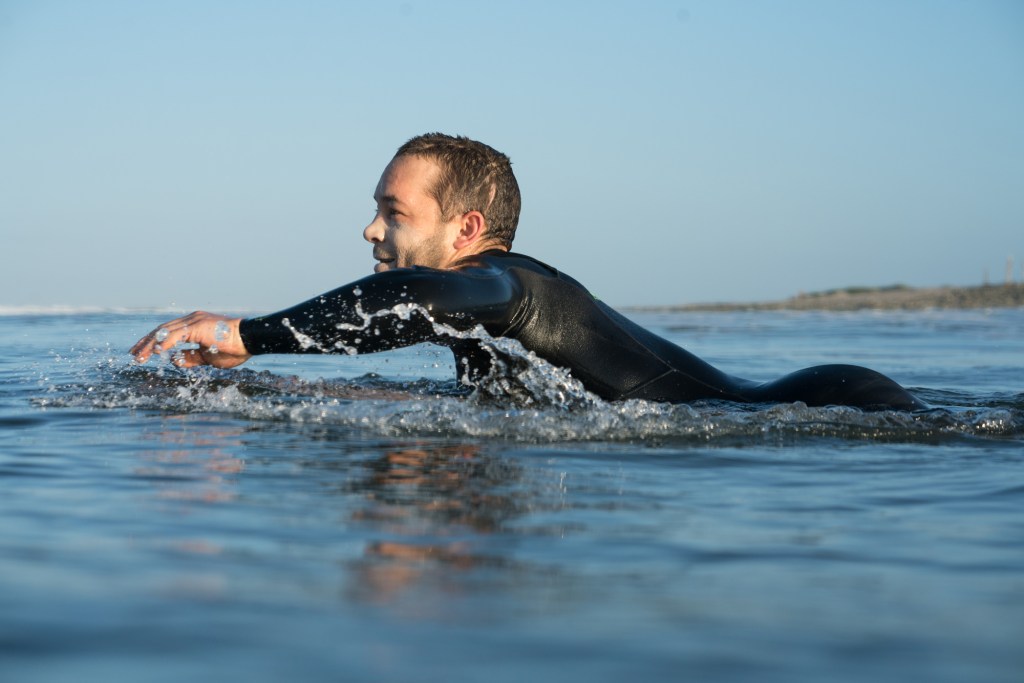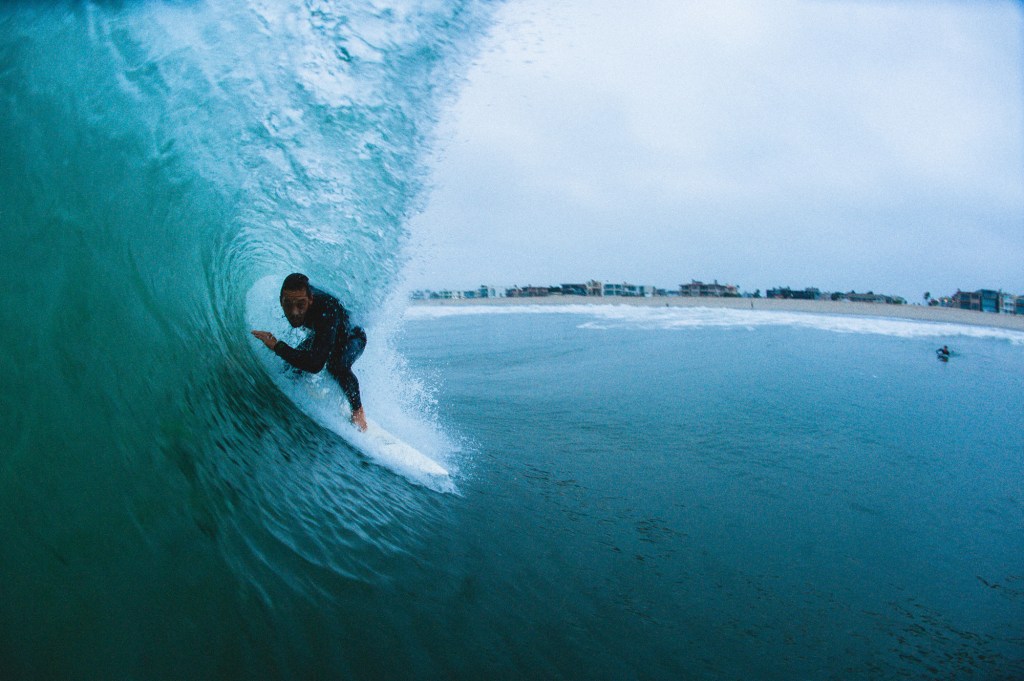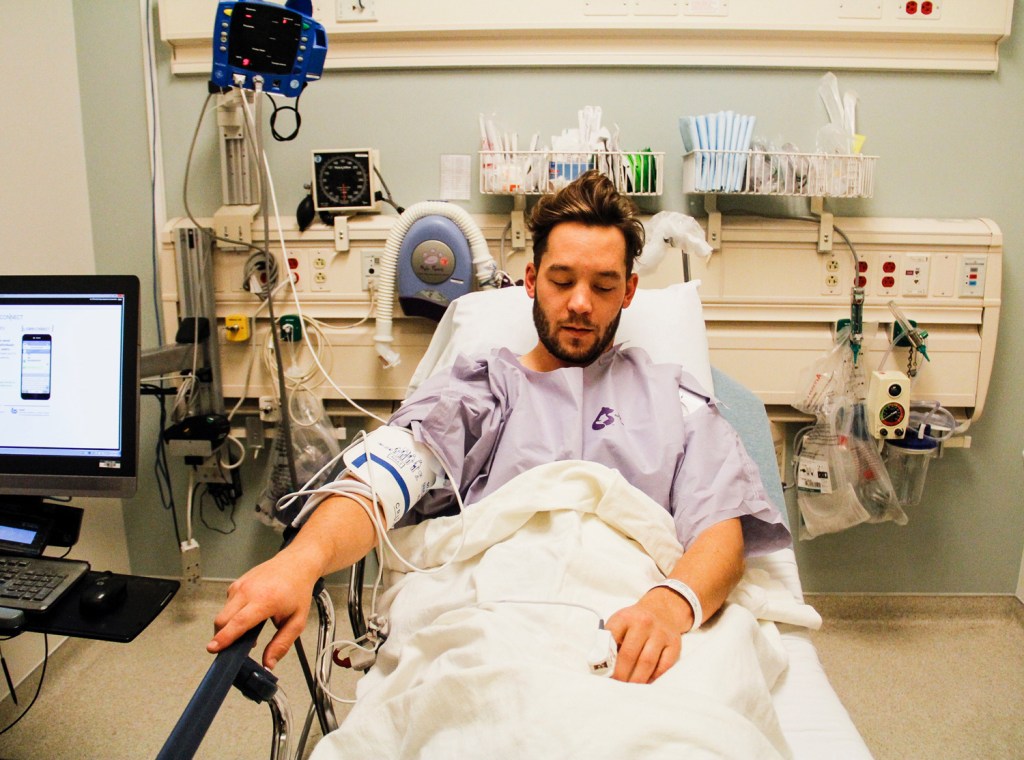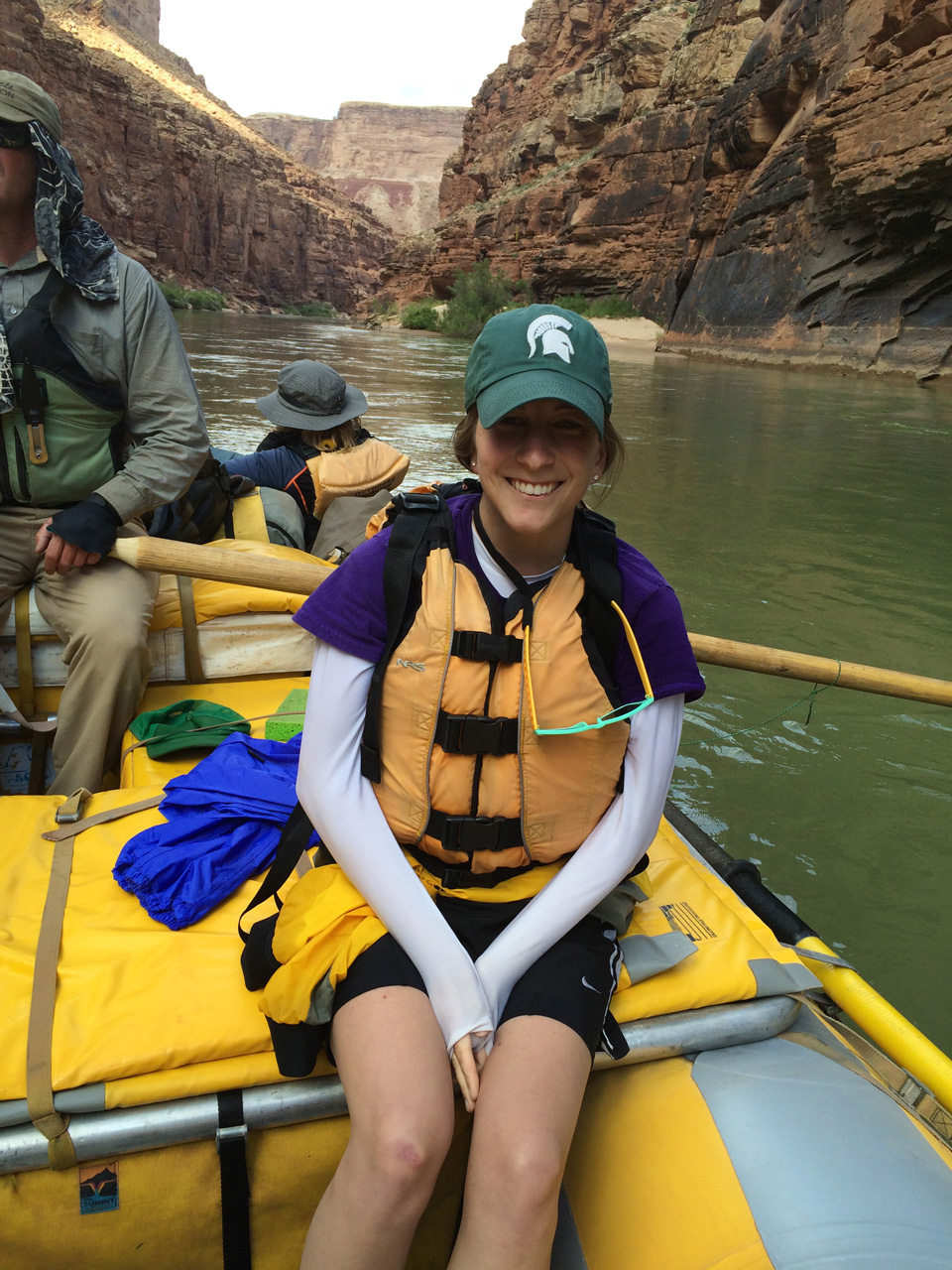In August 2006, Jared Muscat, then 17, and his mom drove from San Francisco to the University of California San Diego, where Muscat was starting his freshman year of college. The day they left San Francisco, the duo woke up and hit the road early. Muscat drove. En route to San Diego, they stopped in Newport Beach for a few days to visit with family and friends.
Upon arriving in Orange County, Muscat helped his mom unpack the car before heading to the Pacific Ocean to surf with friends. With the exception of putting family first, to say he lives, eats, sleeps and breathes surfing is an understatement.
“I can’t remember the last day I didn’t spend time in the ocean,” Muscat says. “The ocean is the place where I find my true solace and ability to just say goodbye to whatever or say hello to whatever. It guides me.”
Following his surf session that day—adding to an already full day—Muscat headed to a local hospital equipped with a bunch of DVDs to visit one of his best friends who’d recently been diagnosed with epilepsy. She was there to undergo a video EEG (electroencephalogram), a diagnostic tool that lets doctors identify the types of seizures patients are having and pinpoint the region of the brain where they begin.
In order for a video EEG monitor test to work, a seizure must be triggered. Since sleep deprivation is a common trigger for seizures among those who have epilepsy, the doctors were keeping Muscat’s friend awake until 3am to see if they could trigger seizures and attain the necessary information. Muscat planned to keep his friend company and help her stay awake through the night.
Muscat says he remembers riding his bike home from the hospital late that night and tiptoeing through his mom’s best friend’s house in Newport Beach, where he and his mom were staying, so as not to wake anyone. Early the next morning something unexpected happened. Muscat woke up as he was coming out of a seizure—his own first known seizure—surrounded by paramedics, his mom, her best friend and her best friend’s son.
“By about 6:30am, I was back in the same hospital I’d just been in [visiting my friend],” he says. “While I was in the emergency room in recovery mode, I had a couple small seizures, and they diagnosed me pretty much on the spot.”
Muscat says he didn’t stop to think about the right ways to embrace epilepsy.
“I just looked at it and said, ‘This doesn’t take over my life. I’m just gonna keep going,’” he says. “I didn’t stop to embrace the whole power of it. It was more just embracing the definition of epilepsy.”
According to the Epilepsy Foundation, epilepsy is “a chronic disorder, the hallmark of which is recurrent, unprovoked seizures.” It is the fourth most common neurological disorder and affects people of all ages; one in 26 people will develop epilepsy in their lifetime.
Epilepsy is a spectrum condition, meaning that although seizures manifest differently among those experiencing epilepsy, there are commonalities as well. Not all seizures are caused by epilepsy. Epilepsy can be treated through anti-seizure medications, and if one’s seizures are difficult to control through medications, epilepsy may be treated through surgery, devices, dietary therapy or a clinical trial.
Each person’s journey with epilepsy is different. Dr. Andreas Alexopoulos, an epileptologist and staff physician at Cleveland Clinic’s Epilepsy Center, says, “For many, with an understanding of how to manage your epilepsy and seizures, it is possible to continue pursuing and enjoying outdoor adventures.”
Throughout his journey with epilepsy, Muscat has found ways to remain active. So has Kathryn Hopcian, who was diagnosed with epilepsy in 2011, and enjoys snowboarding, wakeboarding and hiking. Hopcian is the author’s sister.
Muscat, now 29, lives with his wife in Santa Barbara, California, and is social media content producer at Patagonia. Hopcian, 26, lives in Frankfort, Michigan, and works as a waitress at Stormcloud Brewing Company and as a hostess at Manitou Restaurant.

Every moment of the first surf after surgery brought stoke for Patagonia Social Media Content Producer Jared Muscat, 29, who was diagnosed with epilepsy in 2006. (Photo Credit: Kyle Olsen)
We spoke with Muscat and Hopcian to understand their experiences with epilepsy—how they manage it and prepare for outdoor adventures—and to learn what advice they have for others living with epilepsy.
Please note that epilepsy is a disorder that is different for everyone. If you or someone you know has epilepsy, consult a medical professional to determine the best course of action. This story covers what Muscat and Hopcian have found works for them. The stories, advice and resources within this piece may be used as inspiration or a starting point for conversations with medical professionals.
Understanding Epilepsy
For both Muscat and Hopcian, a natural first step post-diagnosis was understanding their epilepsy. Through tests and conversations with their doctors, they came to better understand what their brains and bodies were doing and why. For each, this did not happen overnight. It happened over the span of many years and through a progression of steps.
Hopcian’s first known seizure occurred in summer 2011, before her sophomore year at Michigan State University. She was 18 years old.
“I was at home. My parents were out of town,” she says. “Thankfully, my best friend was over. I was talking to her, and the next thing I know, she’s saying, ‘Kathryn. Kathryn.’ The next thing I know, I’m on the ground and Kelly [my best friend] is crying on the phone to my mom. That’s when [my seizures] started, that we know of.”
Following that first seizure, it took doctors a year to diagnose Hopcian with epilepsy. Over the next 12 months, she participated in an ambulatory EEG, which, like the video EEG, measures brain waves but over a number of hours or days; an MRI to look for structural abnormalities in the brain that could explain a predisposition to seizures; and a video EEG that ultimately led to her diagnosis.
“At first, they thought I was having fainting spells,” she says. “Once I had a few more seizures, they knew for sure that it was epilepsy. I was scared, but I had so much support, so I tried to not let my epilepsy keep me down. I kept an upbeat attitude.”
Learning Triggers
Post-diagnosis, it is common for patients and doctors to work to better understand what triggers the seizures and to concurrently determine a course of action for treatment.
Some commonly reported triggers are sleep deprivation, flashing bright lights, loud noises, stress and not eating well. Each person’s triggers are different, and with an understanding of your triggers, you can take some precautions to put yourself in a safe position during a seizure.

Hopcian and a friend snowboarding in Colorado in January 2012. For Hopcian, building a supportive network has been integral to continuing to pursue her outdoor passions. (Photo Courtesy: Kathryn Hopcian)
While the case for some, Alexopoulos notes that for many people that’s not possible. “Understanding the triggers is important,” he says, “but many, many times just knowing the triggers is not going to prevent the seizures from happening. It’s a biological issue.”
Muscat says, “I learned pretty fast that eight hours of sleep was actually something that I really needed to do or I was going to have a seizure. So I started training myself to become a good sleeper. I went to bed early, so I could wake up early to surf. I had the right passion to make that combination work.”
Muscat learned more with each seizure, like noticing his body would send “alerts” that a seizure was coming. He says his body adapted, which helped him write off the seizures and also learn to take better care of himself.
Hopcian and her doctors determined that sleep deprivation and stress were triggers for her.
Trying Anti-Seizure Medications
While learning what triggers the seizures, patients and doctors also commonly start trying anti-seizure medications. “Once the diagnosis is established, anti-seizure medications have to be used,” Alexopoulos says. “There are very rare exceptions.”
“The medications were one of the toughest things, especially in college, because of all the side-effects,” Hopcian says. “Trying to learn, study and take exams while taking medications that impacted my memory and constantly made me fatigued was not easy. Plus, the medications weren’t controlling my seizures, so we kept switching them. Every time you switch a med, it’s an adjustment process. It throws your body out of whack.”
Muscat says, “My doctors were going through the rounds trying to figure out which meds were right. They immediately put me on some of the heavier ones on some high doses, and then just kept trying to figure out which one was right. I would come back to them and say, ‘This side effect is way too much. Can we please get this one down or cut off?’”
Muscat believes the trial-and-error period led to a couple extra seizures because he either wasn’t completely honest about the severity of his latest seizure or simply tried to fight through it on his own. From this, he learned an important lesson: to never skip taking his medications. He resolved to build taking them into his daily routine.
“I was learning how to be someone who regularly took medicine,” he says. “It took me a couple rounds of seizures to buy one of those pill cases where you have your pills distributed for every day of the week.”
Even with the pill cases, it took a major seizure to really drive the point home for Muscat. When he failed to show up at a friend’s for an early-morning surf, Muscat says his friend came over and found him lying on the couch. He wasn’t breathing. Muscat’s friend, a lifeguard, performed CPR and called 911. The paramedics resuscitated Muscat, but then he went into a 10-day coma.

With the exception of putting family first, to say Muscat lives, eats, sleeps and breathes surfing is an understatement. (Photo Credit: Luke Williams)
“That’s when I learned a huge lesson in terms of I need to have reminders on my phone to take my pills,” he says. “I can’t miss my pills. There’s no excuse for that.”
Communication Is Key
In addition to the importance of taking his meds, Muscat emphasizes the importance of communication when staying active with epilepsy. Hopcian agrees.
Up-front communication is a best practice when planning any outdoor mission. The same is true when adventuring with epilepsy, Muscat and Hopcian say. When heading out, they ensure family, friends, coworkers, adventure buddies and others know they have epilepsy and understand what to do if they experience a seizure when adventuring together.
Muscat and Hopcian both carry cards that indicate that they have epilepsy and list their names, insurance information and the medications they’re taking. The cards also detail an emergency contact and their doctors’ contact information. Hopcian wears a medical ID wristband.
In college, Muscat and Hopcian made sure roommates, resident assistants, professors and others they had contact with on a daily basis knew they had epilepsy and how to respond. Now, they do the same in their workplaces and everyday lives.
Hopcian says, “I always make sure to tell someone what I’m doing and when I’m doing it. I always wear my medical ID wristband. If I’m out on the water, I wear a life jacket and invite a friend or someone from my family to go with me.”
Remaining Active in the Outdoors
Doctors have long touted the health benefits of staying in shape and eating well, and the recommendations are no different for those who experience epileptic seizures. But Muscat’s first doctor wasn’t keen on him continuing to surf, saying it was dangerous for someone with epilepsy. Muscat explained to her, “You told me to be stress-free, and if you want me to be stress-free, there’s no chance I can be salt-free. The ocean is what provides for me.”

To minimize seizures, Muscat’s doctors told him to limit stress. His response: “if you want me to be stress-free, there’s no chance I can be salt-free. The ocean is what provides for me.” (Photo Credit: Nick Liotta)
Muscat’s mother, who was also in that appointment, backed her son up, and Muscat hasn’t missed a beat in the ocean since.
“That really became my first belief in how I approached epilepsy,” he says. “I guess I have to take medication, but at the end of the day, the most important thing is that I stay physically and mentally healthy. So I focused on that.”
Growing up, Hopcian played soccer and swam competitively. She also spent time outside, hiking, camping, wakeboarding and snowboarding in Northern Michigan. “Being active has always helped me get my mind off things, to relieve stress and feel at peace,” Hopcian says. “With my epilepsy, staying active has also helped me feel a sense of independence.”
In college, Hopcian spent part of each winter snowboarding with friends. “Even with my epilepsy, I’d go snowboarding out in Colorado,” she says. “It just clears your mind and gives you that adrenaline rush. Out on the mountain, I’m just in my element, and there’s a great amount of happiness I get from being out on the slopes with friends.”
Overcoming Epilepsy
When treatment through anti-seizure medications doesn’t work, epilepsy may be treated through surgery, devices, dietary therapy or a clinical trial. Anti-seizure medications alone didn’t work for Muscat or Hopcian, and in 2018, both underwent brain surgery.
In 2017, Muscat switched to a doctor at the University of California Los Angeles. Through a series of tests, Muscat’s doctor discovered the root cause of his epilepsy was focal cortical dysplasia, which is one of the most common causes of epilepsy. Muscat says medical professionals told him that focal cortical dysplasia doesn’t respond to medicine for “too long,” so his doctor set out to locate Muscat’s focal cortical dysplasia.
“It was about six months and a great variety of many tests,” he says. “By the end of it, on March 12, 2018, they went in, measured out exactly what they wanted to pull and took part of my brain out. I have not had a seizure since.”
Hopcian had her surgery at the Cleveland Clinic in Cleveland, Ohio, in April 2018. Like Muscat, she went through months of testing leading up to the operation.
Hopcian’s surgery, a right temporal lobectomy, was also successful. Leading up to the operation, she was having seizures nearly every day, sometimes multiple times a day. To date, she’s had almost none post-surgery.
She says, “My recovery has been tough, but the thing that helps me the most is being Up North [in Northern Michigan] again—being out on the lake, going for walks in nature, being active and getting moving. It’s refreshing and relaxing for my brain.”
Post-surgery, Muscat had to wait three months before he could get back in the ocean—a true test of patience. He got back in the water on June 12.

The path to brain surgery is in some ways similar to big wave season: Much time is spent training and keeping an eye on the goal. This photograph was taken minutes before Muscat underwent brain surgery in 2017. (Photo Credit: Jessica Muscat)
“The first duck dive that I took, I remember feeling, to an extent, that the surgery was over,” he says. “I just got my head wet underwater, let the ocean glide and flow over me—and then I got barreled on my first two waves.”
Alexopoulos firmly believes, and knows, his job extends beyond the walls of his office. He’s with his patients for the long haul.
“I very much believe that the job of the seizure doctor is not just to take care of the seizure medicines,” he says. “You have to look at the person as a whole person. You have to look at the things that they like to do and what adjustments need to be made in their life so they can lead a normal life. There’s a good number of people with epilepsy who are able to lead a normal life.”
Advice for Other Outdoor Enthusiasts Living with Epilepsy
In addition to practicing good communication, Muscat and Hopcian encourage utilizing online resources and communities, like the Epilepsy Foundation.
Muscat says, “Find the Epilepsy Foundation that is closest to you, and befriend them. Neurology is a ridiculously complex field of medicine. I learned that you need to find an epilepsy specialist, and one of the easiest ways to do that is by finding the Epilepsy Foundation near you.”

Muscat puts it simply: “If you can battle yourself through a seizure, you can lead a team. And what you need is a team. So work to get aligned with the people who love you and care for you.” Here, Hopcian is pictured on a Grand Canyon river trip with her family in 2015. (Photo Credit: Carol McKee)
Beyond connecting with an epilepsy specialist, Muscat says the Epilepsy Foundation gave him a network of people to connect with. “Epilepsy is a brain condition that’s a lot different than any medical feeling that two people can compare or relate to unless you’ve experienced it,” he says. “Finding that network of people became something that further helped me feel safe, helped me pursue health—completely made me more aware of what I was doing and how it impacted my epilepsy.”
Hopcian agrees. “My epilepsy support groups that I’m part of on Facebook help me,” she says. “Reading other people’s posts that are going through the same thing helps me. I’m also part of an epilepsy support group in Florida, Josh Provides, that helps me a lot with their guidance.”
Muscat puts it simply: “If you can battle yourself through a seizure, you can lead a team. And what you need is a team. So work to get aligned with the people who love you and care for you. Find a doctor who you can be honest with and who will be honest with you. Find a network of other people who deal with the same struggle. Make it a conversation. Make it an everyday conversation. Try to take away from how big of a deal it is. That’s how everyone gets comfortable.”
You can find and connect with Muscat and Hopcian on Instagram at @jaredamuscat and @hopciank. Muscat has also written two stories for Patagonia’s The Cleanest Line on epilepsy. You can find them here.
